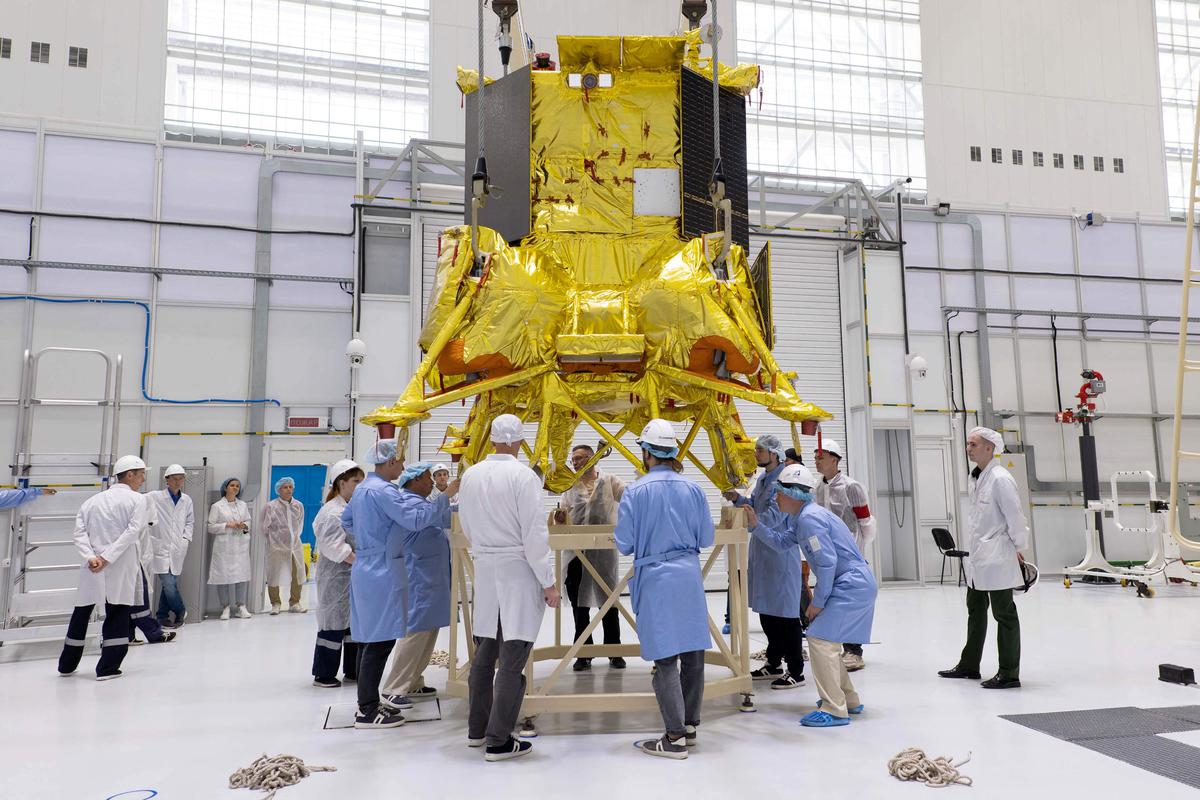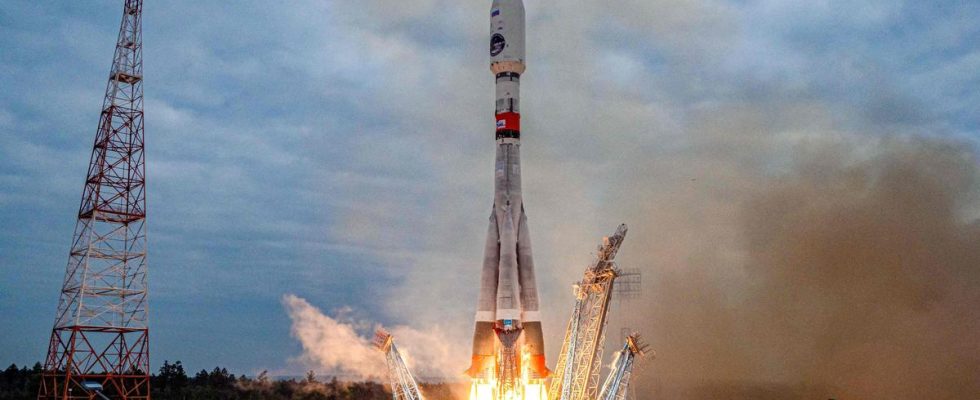L’Russian space industry is playing big, and some of its chief engineers must be sweating profusely. For the first time since 1976, Moscow should attempt the landing of a space probe, Luna-25. The craft is supposed to touch the South Pole of the neighboring star on Monday August 21. But an incident announced on Saturday by Roscosmos, the country’s space agency, raises a big doubt. At the beginning of the afternoon, the probe did not respond correctly to the order to carry out the maneuver which should inject it into its pre-moon landing orbit. Roscosmos has not provided any additional information at this stage…
L’Russian space industry is playing big, and some of its chief engineers must be sweating profusely. For the first time since 1976, Moscow should attempt the landing of a space probe, Luna-25. The craft is supposed to touch the South Pole of the neighboring star on Monday August 21. But an incident announced on Saturday by Roscosmos, the country’s space agency, raises a big doubt. At the beginning of the afternoon, the probe did not respond correctly to the order to carry out the maneuver which should inject it into its pre-moon landing orbit. Roscosmos has not provided any additional information at this stage.
In case of failure and loss of the machine, we would not like to be in the place of Yuri Borissov, the boss of Roscosmos. And even less to that of his subordinates. If the incident ends in a simple delay before a final success, Vladimir Putin will on the contrary be able to brag about the regained luster of great Russia, a colossal space power in Soviet times, the era of exploits such as the putting into earth orbit at all first satellite, Sputnik 1 in 1957, or the sending into space of the first man, Yuri Gagarin four years later.
Luna-25 picks up the threads of a glorious history, even if the small step taken by Neil Armstrong on July 21, 1969 forever eclipsed the contributions of the Soviet lunar missions. Launched in 1959, the Luna robotic exploration program notably enabled the return to Earth of fragments of lunar rocks. With a major discovery at stake, following the Luna-24 mission in August 1976: the presence of water in the regolith, the layer of dust that covers the star.
Struck with senescence after the agony of the Soviet Union, undermined by the loss of skills and by corruption, the Russian space industry has never been able to prove itself worthy of this heritage. This is why the course of operations is scrutinized closely. Launched by a Soyuz rocket on the night of August 10 to 11, the probe was propelled without a hitch into its lunar orbit, joined five days later. If she survives her current problems, her descent will be perilous, as no one has ever aimed for the South Pole. If the robot does not crash there, it will be assigned to take soil samples and analyze them for a year.

The Luna-25 probe at the Vostotchny cosmodrome, a few weeks before its launch on August 11.
AFP/HO/Russian Space Agency Roscosmos
India is aiming for the South Pole too
In the same calendar window as Roscosmos, the Indian Space Research Organization (ISRO) also aims to land its Chandrayaan-3 spacecraft at the lunar South Pole. The event could take place on August 23 or 24. The mission started on July 14, the day the GSLV-Mk III rocket took off. Made in India, this launcher is much less powerful than the Russian Soyuz. From then on, Chandrayaan-3 had to loop several ellipses around the Earth in order to gain speed before being stuck on the right trajectory.
Equipped with a moon landing module and a mobile rover for exploration, the vessel completes revolutions around our satellite before beginning the crucial phase of its mission. India has learned the hard way that it is not without risk. A first attempt failed four years ago. A success would bring the Asian giant into the very select club of those who have managed to send machines to the Moon without denting them: Russia, the United States and China, which is working hard to make up for its technological delay on the American leader.
Since the first probe was put into orbit around the Moon in 2008, India has been seeking success at a lower cost than its major competitors. Not always wisely. In 2019, Prime Minister Narendra Modi congratulated himself on having shot down a satellite in low (Earth) orbit by means of a missile. An initiative of immense stupidity, which resulted in the multiplication of space debris.
Meanwhile, in the United States…
NASA is no longer demonstrating its robotic know-how in the suburbs of the Earth. Its probes, it places them on Mars without firing a shot – until proven otherwise. For manned missions, it’s a different story. Ten days ago, she leaked what all observers already knew: her timeline for the return of the man to lunar soil is untenable. Scheduled for 2025, the Artemis-3 mission – which aims for this objective – is heavily handicapped by the absence of a reliable landing vehicle. It is to be provided by SpaceX, Elon Musk’s company, in an evolved version of its Starship ship. On April 20, his test ended in a huge ball of fire. There is work…

